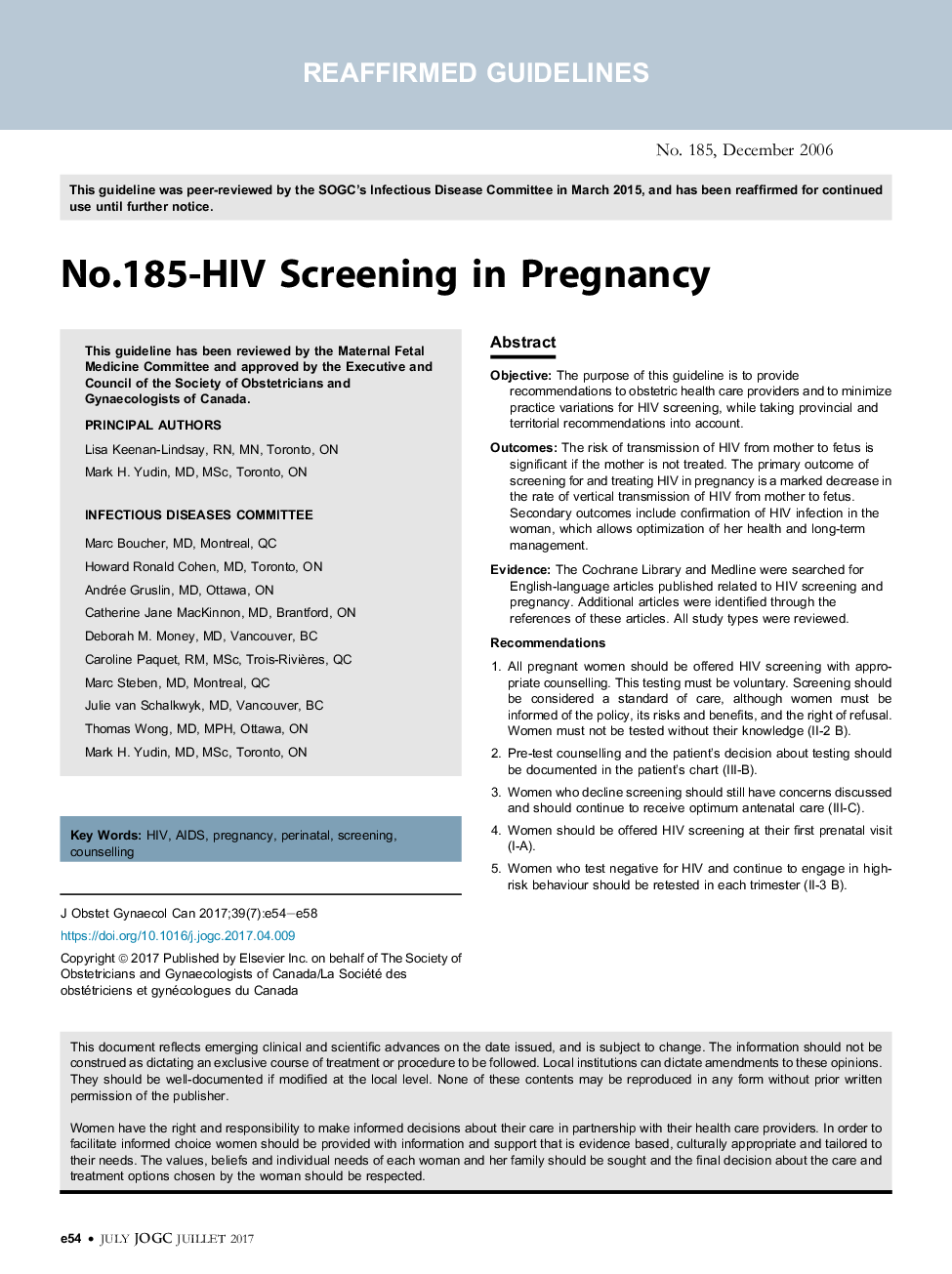| کد مقاله | کد نشریه | سال انتشار | مقاله انگلیسی | نسخه تمام متن |
|---|---|---|---|---|
| 5693234 | 1410163 | 2017 | 5 صفحه PDF | دانلود رایگان |
عنوان انگلیسی مقاله ISI
No. 185-HIV Screening in Pregnancy
ترجمه فارسی عنوان
شماره 185-غربالگری ایدز در بارداری
دانلود مقاله + سفارش ترجمه
دانلود مقاله ISI انگلیسی
رایگان برای ایرانیان
کلمات کلیدی
اچ آی وی، ایدز، بارداری، پریناتال، غربالگری، مشاوره،
موضوعات مرتبط
علوم پزشکی و سلامت
پزشکی و دندانپزشکی
زنان، زایمان و بهداشت زنان
چکیده انگلیسی
ObjectiveThe purpose of this guideline is to provide recommendations to obstetric health care providers and to minimize practice variations for HIV screening, while taking provincial and territorial recommendations into account.OutcomesThe risk of transmission of HIV from mother to fetus is significant if the mother is not treated. The primary outcome of screening for and treating HIV in pregnancy is a marked decrease in the rate of vertical transmission of HIV from mother to fetus. Secondary outcomes include confirmation of HIV infection in the woman, which allows optimization of her health and long-term management.EvidenceThe Cochrane Library and Medline were searched for English-language articles published related to HIV screening and pregnancy. Additional articles were identified through the references of these articles. All study types were reviewed.Recommendations1.All pregnant women should be offered HIV screening with appropriate counselling. This testing must be voluntary. Screening should be considered a standard of care, although women must be informed of the policy, its risks and benefits, and the right of refusal. Women must not be tested without their knowledge (II-2 B).2.Pre-test counselling and the patient's decision about testing should be documented in the patient's chart (III-B).3.Women who decline screening should still have concerns discussed and should continue to receive optimum antenatal care (III-C).4.Women should be offered HIV screening at their first prenatal visit (I-A).5.Women who test negative for HIV and continue to engage in high-risk behaviour should be retested in each trimester (II-3 B).6.Women with no prenatal care and unknown HIV status should be offered testing when admitted to hospital for labour and delivery. Women at high risk for HIV and with unknown status should be offered HIV prophylaxis in labour, and HIV prophylaxis should be given to the infant post partum (III-B).7.Women who test positive for HIV should be followed by practitioners who are knowledgeable in the care of HIV-positive women (III-C).
ناشر
Database: Elsevier - ScienceDirect (ساینس دایرکت)
Journal: Journal of Obstetrics and Gynaecology Canada - Volume 39, Issue 7, July 2017, Pages e54-e58
Journal: Journal of Obstetrics and Gynaecology Canada - Volume 39, Issue 7, July 2017, Pages e54-e58
نویسندگان
Lisa (Principal Author), Mark H. (Principal Author),
